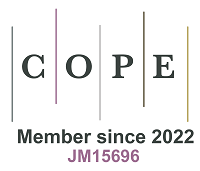REFERENCES
1. Hong J, Feng B, Wu Y, Wang L. Do government grants promote innovation efficiency in China’s high-tech industries? Technovation 2016;57-58:4-13.
2. Makkonen T, Repka S. The innovation inducement impact of environmental regulations on maritime transport: a literature review. IJISD 2016;10:69.
3. Cheng Z, Li L, Liu J. The emissions reduction effect and technical progress effect of environmental regulation policy tools. J Clean Prod 2017;149:191-205.
4. Fuentes R, Fuster B, Lillo-bañuls A. A three-stage DEA model to evaluate learning-teaching technical efficiency: key performance indicators and contextual variables. Expert Syst Appl 2016;48:89-99.
5. Chen L, Wang Y, Lai F, Feng F. An investment analysis for China’s sustainable development based on inverse data envelopment analysis. J Clean Prod 2017;142:1638-49.
6. Yu S, Gao S, sun H. A dynamic programming model for environmental investment decision-making in coal mining. Appl Energy 2016;166:273-81.
7. Costa-campi M, García-quevedo J, Martínez-ros E. What are the determinants of investment in environmental R&D? Energy Policy 2017;104:455-65.
8. Yang L, Liu J, Wang Y, Martínez L. New activation weight calculation and parameter optimization for extended belief rule-based system based on sensitivity analysis. Knowl Inf Syst 2019;60:837-78.
9. Cooper WW, Seiford LM, Tone K. Data envelopment analysis: a comprenhensive text with models, applications, references and DEA-solver software. 2nd ed. Germany: Springer: Berlin/Heidelberg; 2007.
10. Toloo M, Barat M, Masoumzadeh A. Selective measures in data envelopment analysis. Ann Oper Res 2015;226:623-42.
11. Sheng Y, Wu Y, Shi X, Zhang D. Energy trade efficiency and its determinants: a Malmquist index approach. Energy Economics 2015;50:306-14.
12. Wang Y, Yang J, Xu D. Environmental impact assessment using the evidential reasoning approach. Eur J Oper Res 2006;174:1885-913.
13. Wang Y, Luo Y. Integration of correlations with standard deviations for determining attribute weights in multiple attribute decision making. Math Comput Model 2010;51:1-12.
15. Dempster AP. Upper and lower probabilities induced by a multivalued mapping. In: Yager RR, Liu L, editors. Classic works of the dempster-shafer theory of belief functions. Berlin: Springer Berlin Heidelberg; 2008. pp. 57-72.
16. Shafer G. A mathematical theory of evidence. Princeton: Princeton University Press; 1976.
17. Seiford LM, Zhu J. Modeling undesirable factors in efficiency evaluation. Eur J Oper Res 2002;142:16-20.
18. Song M, Peng J, Wang J, Dong L. Better resource management: an improved resource and environmental efficiency evaluation approach that considers undesirable outputs. Resour Conserv Recycl 2018;128:197-205.
19. Wang Y, Liu J, Elhag TM. An integrated AHP-DEA methodology for bridge risk assessment. Comput Ind Eng 2008;54:513-25.
20. Wang EX, Wu CY. Spatial-temporal differences of provincial eco-efficiency in China based on supper efficiency DEA model. Chinese Journal of Management 2011;3:443-50.
21. Fare R, Grosskopf S, Lindgren B, Roos P. Productivity change in Swedish pharmacies 1980-1989: a nonparametric Malmquist approach. J Product Anal 1992;3:85-102.
22. Ye F, Yang L, Wang Y. A new environmental governance cost prediction method based on indicator synthesis and different risk coefficients. J Clean Prod 2019;212:548-66.






